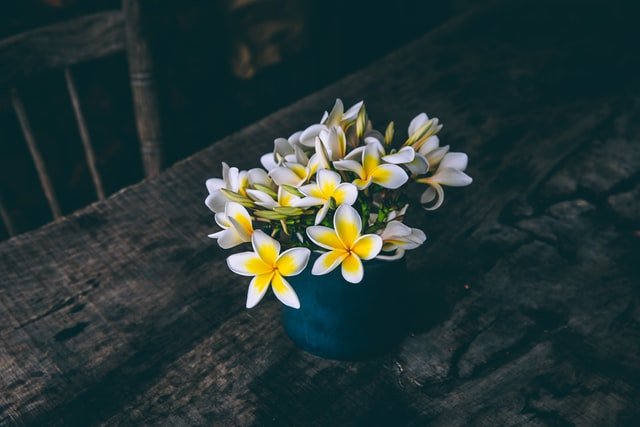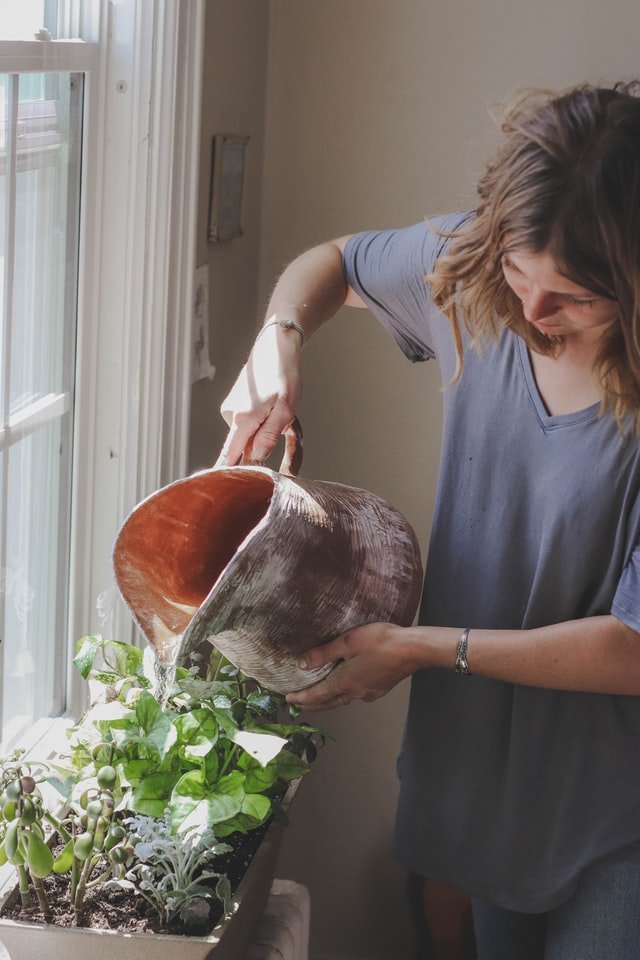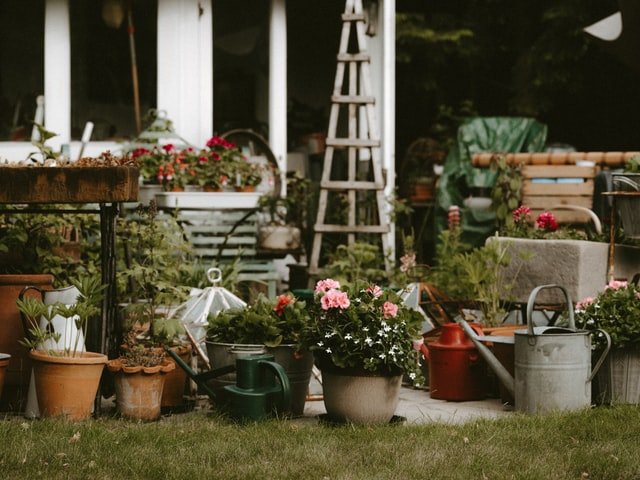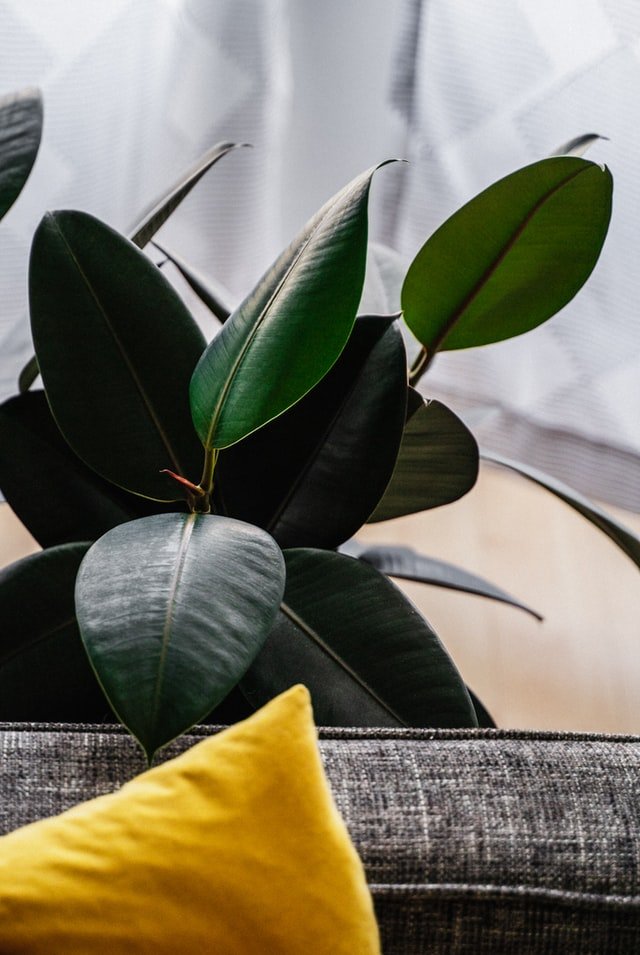It is the summer season already! You have to take proper care of your house plants during these times because many of them cannot withstand high temperatures. During this lockdown, since we are having a lot of lazy times, we can surely devote it to take care of the little lives. This blog-post lists 6 points to keep in mind while planting or taking care of your house plants. If you are a new home-maker planning to pot some easy indoor plants, this blog will also help you to choose your kind of plant while taking basic care of them.
- Choosing a house plant
Indoor plants are broadly of two types: flowering or foliage. Many of the sellers in the market sell any x-y-z plant, tagging them as house plants. Make sure to educate yourself with the knowledge of indoor plants before buying one. Go for a plant that is easy to care for. Several plants like palms, pothos, lucky bamboo and rubber are low-maintenance plants. Other plants that can grow in low light include snake plants and cacti.

Five indoor flowering plants:
- Peace lily
- Jasmine
- Lavender
- Hibiscus
- Rhododendron and many more…
Five indoor foliage plants:
- Rubber plant
- Jade plants
- Palm trees
- Yucca
- Lucky bamboo and many more…
- Watering your plants, moisture content and pot selection

- The foremost thing that a house plant needs are keeping the soil moist, but not wet. You can check this by poking your finger into the soil up to your knuckle. If it feels damp, then the water content is perfect. Else, it needs more water (varies with the plant). You can also use a handheld moisture meter to determine the moisture level of your soil.
- Choose your flower pot wisely. Make sure that there are drainage holes at the bottom. Clay or ceramic pots absorb more water than glass or plastic. Keep in mind these properties while watering your plants.
- Be careful while watering your plants. If the soil in the flower pot is warm, don’t water it right then. The best time for watering plants is early in the morning, around 5-6 AM. You can also choose a time in the evening but make sure not to water them during the daytime after 9 AM. Make sure the flower buds stay out of water, otherwise they may get damaged.
- Exposure to temperature
- Keep the potted plants out in the sun till 9 AM and not more than that under any circumstances. Make sure to place them at the shady corners of the balcony or window after that. If they are the seasonal flowering plants, you can again bring them back to sunlight after 4 PM in the afternoon. Several flowering plants like Royal Poinciana and White Plumeria that need heavy sunlight can be sustained in the sun, provided they are watered twice daily.
- Generally, flowering plants need 12 to 15 hours of light in a day while the lower limit can be extended to 14 for foliage plants. In the case of a rainy day, fluorescent lights can also act as a substitute for sunlight for particular plants.
- Avoid moving of the flower pots frequently. Plants adjust themselves to their surroundings very slowly. So if you keep on moving the pot from one place to another, the plant will face sudden changes in temperature subsequently, leading it to desiccation. If you really want to change the place of the pots, do it slowly by exposing it to the new location for an hour every day. In this way, the plant will gradually adjust itself to the new surroundings without having a negative effect.
- Feeding the indoor plants

- Unlike garden plants, indoor plants do not have a regular source of nutrients. So it is necessary that they should be fertilized monthly. The right type of fertilizer depends on the plant type, but choosing a synthetic fertilizer over an organic one may cause adverse effects on the plant.
- A flowering plant needs a high potassium fertilizer whereas a foliage plant needs a high nitrogen fertilizer. Cacti require a special potting mixture that is effective in draining water, thus deteriorating the moisture level in the soil.
- Repotting of plants is essential when your plants start growing. When shifted to a bigger tub, the tremendous growth of the root automatically allows the plant to adjust to the new container. Here also, you have to be very specific regarding your pot choices (like it should not be too big or even specific to your house plant).
- General care
- Keep the roots of your plant free from weeds. They suck the essential nutrients from the soil, thus preventing the growth of the plant.
- Take care to ensure that the bottom (and soil) of the plant receives air and sunlight. Sometimes, the roots do not get enough space to grow, and repeated watering also does not help. In this case, you must repot the plant in a larger pot or plant it in the garden.
- Ensure that your house plant is pruned regularly. Regular pruning keeps the plant healthy by repelling insects. It also ensures the healthy growth of the plant.
- Many people suggest to dip tea or coffee into the house plant, but it is not always helpful (depending on the plant). The sugars in those beverages attract more microbes. Additionally, their acidic content may have a negative effect on the plants.

- Common mistakes to avoid with indoor plants
- Avoid over-watering. All plants do not need a lot of water.
- Focusing more on flowers and leaves, thus forgetting the roots; roots are the main inlets for plant ingredients. It is necessary to keep them strong.
- Don’t do too much; everything of too much has adverse effects: Too much watering, too much light, too much moisture, too much moving around, too much anything will not do good!!
- Not knowing about the origin of the plant, like its climatic conditions.
- Being overconfident about yourself about ‘successfully’ growing plants at home.
watch the video